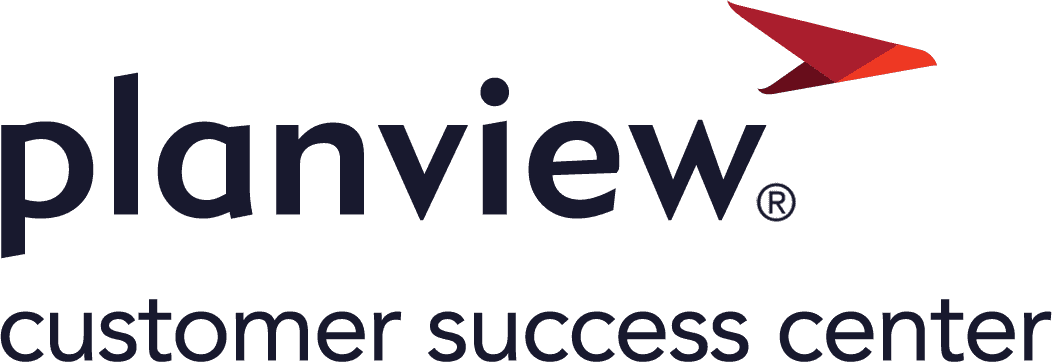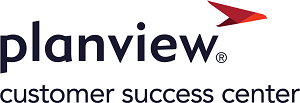Key results
What are key results?
You use key results to capture and track progress toward different elements of an objective. When creating a key result, you can specify the following information:
- The metric to be measured as part of the progress of the objective, such as Reduce the acquisition cost for customers.
- The owner of the key result: Available owners are users who have at least view access to the work item or strategy. The owner of a key result can be different from the owner of the parent objective.
- One or more targets to measure with this key result. For more information, see Working with multiple targets in a key result.
- The source of the metric data.
- The values for any custom attributes that a Planview Admin administrator added for OKRs.
You can also change the target dates and parent objective to be different from the parent objective.
Key results are displayed on the Objectives and Key Results screen under their respective OKR levels when in card view (  ) or in a hierarchical table in list view (
) or in a hierarchical table in list view (  ). Depending on whether you are in card view or list view, the screen can show information for each key result such as the percentage of the key result that has been completed, based on the progress updates, the number of activities/work items (
). Depending on whether you are in card view or list view, the screen can show information for each key result such as the percentage of the key result that has been completed, based on the progress updates, the number of activities/work items (![]() ) connected to the key result, and the target end date for the key result. For more details, see Objectives and Key Results screen basics.
) connected to the key result, and the target end date for the key result. For more details, see Objectives and Key Results screen basics.
Positive vs. negative key results
Depending on the needs of the metrics being tracked, the direction of a key result can be either positive or negative, as described in the following table.
| Key result direction | Description | Example |
|---|---|---|
| Positive |
Higher numbers are better.
|
Tracking a goal of increasing revenue from $80 million to $100 million. |
| Negative |
Lower numbers are better.
|
Tracking a goal of reducing the cost of consumer acquisitions from $80 to $50. |
The Key Result screen
You can hover over a key result for additional details or click a key result to open its Key Result screen, which includes the following tabs:
- Details: Shows information that you can modify, such as the key result name, owner, and current progress; a link to update progress; and the following subtabs:
- Target(s): Shows the start and end dates for each key result's target as well as the target value and ID for each target.
- Progress Entries: Lists the entered progress values for the key result. Also allows you to edit or delete progress values.
- Time Chart: Shows the key result's trajectory from the progress updates relative to the specified dates and target value.
- Activities: Shows all activities/work items connected to the key result. You can click an activities/work items to open it or remove the connection. You can also connect more activities/work items.
- History: View the activity stream for the key result, which contains the history of modifications made to the key result, including data for multiple targets.
For more information about working with key results:
- In Planview Portfolios, see Working with Objectives and Key Results (OKRs) and Managing relationships for OKRs.
- In AgilePlace, see Key results.
Working with multiple targets in a key result
Multiple targets for a single key result can facilitate more thorough progress tracking, such as when users need to monitor progress across various timeframes or durations within a single key result. Target date ranges are sequential and cannot overlap. Examples of how you can use start and target values include the following scenarios:
- For a new project where you want to measure by percent, you could enter 0 as the Start Value and 100 as the Target Value for Target 1.
- For an existing metric where you want to move acceptance from 10% to 15%, you could enter 10 as the Start Value and 15 as the Target Value for Target 1.
- For a project where you want to measure progress by percent in multiple stages, you could enter 0 as the Start Value, 50 for the Target Value for Target 1, 90 as the Target Value for Target 2, and 100 as the Target Value for Target 3.
TIP
The Start Value and Target Values can also go in a negative direction. For example, if you want to reduce customer acquisition cost from $80 to $50 in the next year, you could enter 80 as the Start Value and 50 as the Target Value.
NOTES
- You must always have at least one target.
- Each key result can have up to 12 targets.
- For targets after Target 1, the Start Date for the target is automatically set to one day after the previous target's End Date.
- The End Date for the last target cannot exceed the End Date for the parent objective.
- You can view the progress percentage for each target, which is based on the following formula:
(last progress for KR / target value) * 100


 > Add Key Result.
> Add Key Result. icon, you can hover over the icon for a description.
icon, you can hover over the icon for a description.